MotoOnline.com.au puts Honda’s 2009 model CB1000R nakedbike through its paces to find out its a friendly beast within.
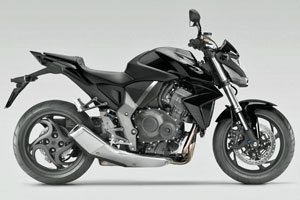
HONDA CB1000R SPECIFICATIONS
ENGINE
Engine type: Liquid-cooled, DOHC, 16-valve, inline four cylinder
Bore x stroke: 75 x 56.5mm
Displacement: 998cc
Compression ratio: 11.2:1
Transmission: Six-speed
Power (claimed): NA
Torque (claimed): NA
Fuel capacity: 17 litres
CHASSIS
Frame type: Cast aluminium, mono-backbone
Front suspension: Fully-adjustable 43mm inverted telescopic fork
Rear suspension: Monoshock with gas-charged HMAS damper featuring 10-step preload and rebound
Wheels (front/rear): 17 x 3.50 / 17 x 5.50
Tyres (front/rear): Bridgestone BT016 120/70 ZR17 / 180/55 ZR17
Brakes (front/rear): Twin 310mm discs, four-piston calipers / 256mm single disc and two-piston caliper
Wheelbase: 1445mm
Seat height: 825mm
DIMENSIONS
Weight (claimed): 217kg (222kg with ABS)
PURCHASE DETAILS
Price: $18,190 + orc ($19,190 + orc with ABS)
Warranty: 24 months, unlimited km
Colour options: Dragon Green Metallic and Pearl Night-star Black
Test bike: Honda Australia
www.hondamotorcycles.com.au
When it comes to sportsbike success over the last 18 months, you can’t argue that Honda has been at the front of the pack with its sensational CBR1000RR Fireblade superbike, but Big Red has yet another corner carver also earning its own stripes not far in arrears.
While the Blade won the highly acclaimed International Bike of the Year award in 2008, the Honda CB1000R was a miraculous runner-up, with magazines around the world highly rating the leader of Honda’s nakedbike pack.
Created and built in Italy (yes, Italy!) and released in Australia late last year, the CB1000R has been somewhat of a surprise success story for Honda as it follows closely in its sportier big brother’s footsteps.
The CB1000R features a cast aluminium mono-backbone frame with fully-adjustable 2008/09 Fireblade-spec forks and radial brakes, both slightly revised to be more focussed for the street. It also has a trick single-sided swingarm that is controlled by a rising-rate monoshock.
Engine-wise the bike is just as spectacular, with a 2007-spec Fireblade engine fitted, but again revised for more bottom-end and mid-range power to suit the bike’s intended use.
The difference in this engine compared to the older model Fireblade’s engine is that this has different cams and pistons, while the inlet and exhaust ports are smaller, as are the throttle bodies. Other minor changes include a different crankshaft and revised gearbox, and the ECU setting is slightly different.
There’s no doubt that the naked-superbike sector has really hit top gear in recent years, with many manufacturers offering tempting options minus fairings, and in Honda’s case, the CB1000R is a very stylish ride. The low-slung exhaust on the side without the swingarm looks excellent.
Its lines are sharp at the front with a sleek looking light and fuel tank, while the rear-end is very reminiscent of the current Fireblade in its slim set-up, and you can’t help but admire the black wheels, chassis and engine on this particular model.
Our test bike is a very special one from Honda Australia since it features a range of goodies direct from the genuine Honda Accessories catalogue, including a carbon fibre front guard, Alcantara seat, heated grips, engine ring set, wheel sticker set, 3D logo set and fuel filler pad kit.
The CB1000R is essentially the replacement for the CB900F Hornet (which I’ve never ridden), albeit a much sportier option that ticks all the right boxes in the modern world we live in.
Honda has hit the nail on the head with the ergonomics package on the CB1000R, with a very neutral, flat, seating position offering great comfort for the short or long haul. It’s manoeuvrable, while still comfy enough to make the kays fly by.
Compared to the Ducati Streetfighter it’s less aggressive in its stance, yet easier to get on and adapt to in a shorter amount of time. Both have very different feels despite effectively being head-to-head in the class.
Handling on the ‘Naked Blade’ is every bit what you’d expect from this kind of bike – especially from Honda. While it doesn’t steer as quickly as the Streetfighter, it’s slightly more controlled, maintaining greater balance on the bumpier sections of road.
The Streetfighter turns sharper but both are quick-steering, although the stability in cornering is a very strong point of the CB. Plus, once you’re initially turned, it steers into the corner exceptionally well as its weight seemingly fades away and the bike reacts sweetly.
At slow speeds you’d never guess it weights 217 kilos, with its compact feel working well in suburban areas, while it’s even better out on the open road in twisty hills and flowing bends.
For me the best point is certainly the way it rides over bumps, just soaking them up whether you’re completely upright or if you’ve got a touch of lean angle applied, which is really impressive for a sportsbike.
The braking power is very strong as you’d expect, but it’s the feel of the brakes at both the front and rear where you really begin to appreciate them at each approaching turn or stop sign/traffic light.
Lever feel at the front is tops, while the rear isn’t too touchy and works great. We didn’t have the ABS version, but there wasn’t any point where I thought I needed braking assistance.
Speaking of the levers and controls, both the front brake and clutch lever are adjustable with a large margin of options, and the entire dash set-up is relatively nice.
The only problem I can point out is that the digital display is difficult to see in certain daytime lights, but it has plenty of options while being easy to navigate without the need of a manual.
There’s the speedometer and temperature on the left display, a bar-type tachometer in the centre with the usual range of warning lights situated directly below it, and the fuel gauge, trip metres and clock can sourced on the left on the wide instrumentation panel.
The mirrors work well once you get them adjusted to the exact correct angle for your needs, which can take some time to do on the CB, but once you do you’ll be satisfied with the rear vision.
Down shifting through the gearbox is another bright point when slowing down, with no rear wheel lock apparent whatsoever and a smooth transition down through the gears.
Shifting up under power is a different story though as it isn’t as swift as I would have thought, instead requiring a touch of clutch action if I was to ultimately get the shifts as seamless as possible.
The engine revisions in the bike make it super friendly with no real hint of aggression in the power range, but that may be due to the broad range of power that spans all the way from zero to up around the 10,000rpm mark – the dash reads just over 12.
Its standard gearing is short and I find myself looking for an extra gear many times on the freeway and even in 100km/h zones, so I’d probably take a tooth of the rear and rev it less if I was to own the bike myself.
It’s got plenty of torque in the way that it keeps pulling right the way through the rev range, but I must admit I expected more bottom-end grunt when first glancing at its aggressive styling.
Instead it’s easy in every sense – easy to ride, easy to learn and even easy to recover from mistakes if you get throttle happy. It’s simply not angry enough to catch you out nine times out of 10, which is an ideal thing for many riders.
If a linear powerband is your idea of a perfect ride then you’d be hard pressed to look past this particular naked, even if it is a superbike engine stripped of fairings and bodywork.
But in saying all that, there is more than enough power for the public streets and its fuelling as you apply the throttle is very good. One thing to keep in mind is that because of a lack of windshield, the gusts of wind are always going to up the sensation of speed.
Although there isn’t any shield or much bodywork for wind protection, the covers stemming from the bottom of the fuel tank act as a sort of win deflector to keep your legs out of the wind and the minimalist nose cone at the front does have a hand in directing the wind over your body slightly.
If a comfortable and functional ride is what you’re looking for while still retaining sportsbike handling and power, Honda’s CB1000R may just be the bike for you to make the most of in everyday living.
It’s certainly got the resume to live up to a wide variety of uses, which ultimately means lots of bang for your hard-earned buck. There are many nakeds available now, but the CB is arguably the friendliest of the bunch.


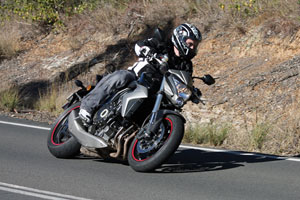
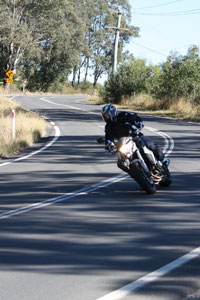
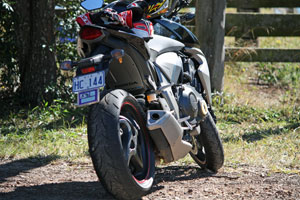
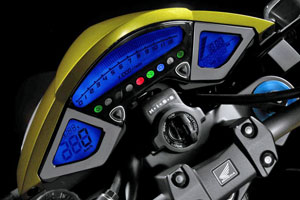





Newsletter